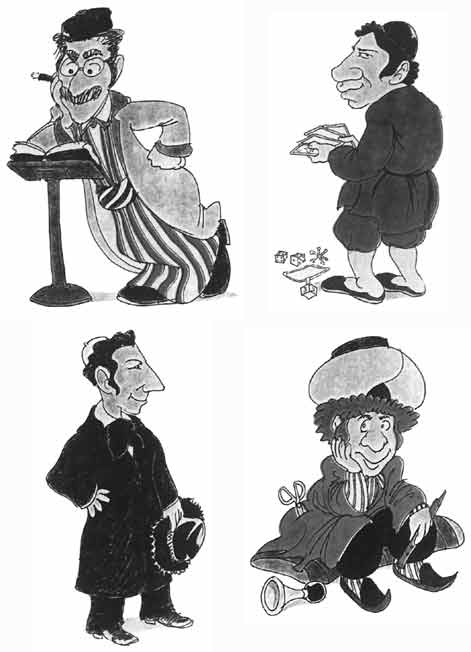With Passover nearly upon us, it is of course apropos to reflect on the holiday. As soon as the holiday begins, we begin our seder. Wine, the green karpas, breaking the middle matzah, eating the bitter herbs, and of course discussion about the Four Sons.
When studying the text of the Four Sons in the Haggadah, it is interesting to note that the Wise Son and the Wicked Son are placed next to each other. When the Haggadah was compiled, many details were considered, and this included the order in which to list the Four Sons. Furthermore, one can perhaps assume that the order in which they were listed is, in fact, the order in which they were sitting around the Seder table.
Why is the Wicked One placed next to the Wise One? Doesn’t it seem odd that these two opposite children are sitting next to each other? What exactly do they have to contribute to each other’s lives? And if your child was the Wise One, would you want him sitting next to a Wicked child?
Although one may try to “sweeten” the Wicked child by saying that he’s not really wicked, but nevertheless, the Hebrew word, rasha, is difficult to translate any other way.
Yet this order has profound meaning and instruction for us today.
In 1952, just a few days before Passover, the Lubavitcher Rebbe, Rabbi Menachem Schneerson, gave the following three meanings behind the juxtaposition of the Wicked and Wise sons.
- Even a Wicked child is not lost and there is always hope to correct his ways. In fact, as proof of this fact, G-d placed the Wise Son next to him to help! The Wicked child should know that he is not alone; he has not been deserted; and there is always hope.
- The Wise child may not say, “What do I care about the Wicked child? Let him suffer the consequences of his actions! It’s not my problem and it’s not my fault!” Such action (or, rather, inaction) is entirely inappropriate! One may never conclude that another is “beyond the pale.” In reaching out to the Wicked child, the Wise child must always keep in mind that he is the one doing the reaching out, and not the other way around. He must always make certain that he influences the Wicked son, and not vice versa. In placing him next to the Wicked child, the Wise son is being told that he has an obligation to reach out.
- The Wise son must always bear in mind that there can be a fine line between right and wrong. He too, could – if not cautious – slide down a slippery slope. He must always be aware that if his behavior is unchecked, it could deteriorate. Unfortunately, we have seen too often those who we previously believed to be of upstanding moral character, turn out to be anything but that. By being placed next to the Wicked child, the Wise one is warned: Don’t think you are immune. Always be careful with how you behave.
If these ideas apply to the Wicked child, then certainly they apply to the other two sons, the Simple and the one who does not know how to ask.
Some of us may sit at the Seder table and wonder, “What is the point of the above lessons for me? There is not a wicked child at my Seder.” Yet, in truth, there is a wicked child at every seder. And for that matter, everywhere. Although one may not be wicked in the traditional sense, each one of us has a “wicked son” within. This does not mean that we are bad people, just that we all have certain inclinations, desires and so forth for things that we should not necessarily be involved in.
So in reading these three lessons about the Wicked child, we must also keep in mind that they also apply to dealing with certain parts of our character.
With warm wises for a kosher and happy Passover.

